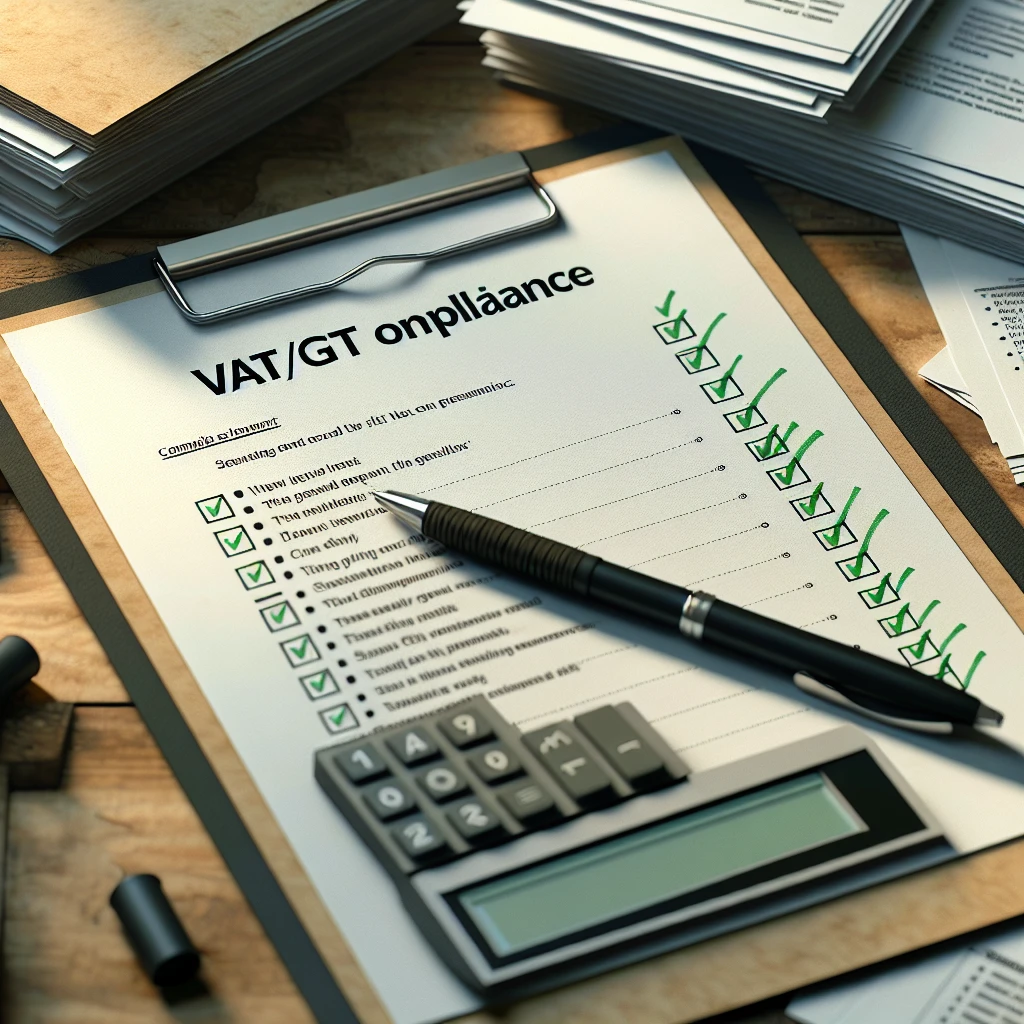Best Practices for VAT/GST Compliance
Staying on top of VAT/GST compliance is not just a legal necessity for ecommerce businesses; it's a strategic move that can save you from hefty fines and protect your reputation. To ensure you're in line with regulations, start by familiarizing yourself with the basics of VAT/GST on our main cluster page. It's crucial to understand the thresholds and rates as they vary by country, which you can dive deeper into through our guide on navigating global VAT/GST rates.
- Accurate Record-Keeping: Maintain meticulous records of all transactions. This includes invoices, receipts, and proof of exports. Digital tools can automate much of this process, ensuring accuracy and saving time.
- Stay Updated: Tax laws are constantly changing. Regularly review your practices in light of new regulations. Resources like our step-by-step guide on accounting for VAT/GST in ecommerce can be invaluable.
- Apply the Right Rates: Applying incorrect VAT/GST rates can lead to significant compliance issues. Use reliable software to keep track of rate changes, especially if you sell internationally.
- Timely Filing and Payments: Late filings can result in penalties. Establish a calendar for when different jurisdictions require filings and stick to it religiously.
- Understand Exemptions and Credits: Not all products are treated equally under VAT/GST laws. Know which items may be exempt and understand how to claim credits for taxes paid on business purchases, as detailed in our article on VAT/GST refunds and credits in ecommerce.
By embedding these best practices into your daily operations, you'll not only comply with VAT/GST regulations but also streamline your financial workflow, ultimately contributing to a healthier bottom line.

Common VAT/GST Compliance Pitfalls
When it comes to VAT/GST compliance, even the most diligent ecommerce businesses can stumble into pitfalls. The complexity of tax laws, especially in a cross-border context, makes it easy to overlook crucial details. Here are some common compliance mistakes that can trip up even seasoned entrepreneurs.
- Underestimating Tax Obligations: Many ecommerce businesses fall into the trap of underestimating their tax obligations. This often happens when sales thresholds in different countries are ignored, leading to unregistered VAT/GST and subsequent penalties. It's essential to monitor your sales and register for VAT/GST as soon as thresholds are crossed.
- Ignoring Place of Supply Rules: The place of supply determines where a sale is taxed. Misinterpreting these rules can result in applying the wrong tax rates or failing to collect tax where it's due. Always verify the place of supply, particularly for digital goods and services that often have different rules.
- Overlooking Marketplace Responsibilities: If you sell through online marketplaces, don't assume they'll handle all your VAT/GST obligations. While some marketplaces collect and remit on your behalf, others require you to manage your taxes. Clarify your responsibilities to avoid any surprises, as discussed in our article on the role of VAT/GST in ecommerce marketplaces.
- Incorrect Filing and Documentation: Inaccurate filings can lead to audits and penalties. Ensure that your tax returns are complete and correct, and that you maintain comprehensive documentation for all transactions. This includes keeping detailed invoices and proof of exports, which are often scrutinized during tax audits.
- Not Utilizing Technology: Manual VAT/GST management is prone to errors. Leveraging technology can significantly reduce the risk of non-compliance. Tools that automate tax calculations, filings, and record-keeping can be a lifesaver, as highlighted in our guide on leveraging technology for VAT/GST management in ecommerce.
By being aware of these common pitfalls and taking proactive steps to avoid them, ecommerce businesses can ensure smoother operations and avoid the headaches of non-compliance. Remember, when in doubt, consult with a tax professional to navigate the complex landscape of VAT/GST compliance.
Navigating Audits and Penalties
Now, let's dive into the crucial aspect of navigating audits and penalties in the realm of VAT/GST compliance. It's a scenario no ecommerce business owner wants to face, but with the right approach, it can be managed effectively. Audits are not necessarily an indication of wrongdoing; they can also result from random selection or discrepancies in filed returns. However, they do require your full attention and a methodical response.
First and foremost, don't panic. An audit is an opportunity to showcase the robustness of your accounting practices. Here's how to navigate through one:
- Organize Your Records: Ensure all your financial records are in order, including invoices, receipts, and proof of export. Digital organization can expedite this process, as can tools that automate record-keeping.
- Understand the Scope: Clarify with the tax authorities the specific areas of your VAT/GST returns they're examining. This will help you focus your preparation and gather the necessary documentation.
- Seek Professional Help: Consider engaging a tax professional who specializes in VAT/GST. They can provide valuable guidance and represent you during the audit.
- Be Cooperative: Demonstrating willingness to cooperate with tax authorities can go a long way. Provide requested information promptly and be transparent about your business operations.
If you're faced with penalties due to non-compliance, it's important to understand your options. Penalties can range from fines to more severe consequences, depending on the infraction. Here's what you can do:
- Review the Assessment: Verify the accuracy of the penalty and the reasons behind it. If there are errors, you can contest the assessment.
- Negotiate: Tax authorities may be willing to negotiate penalties, especially if non-compliance was unintentional and you've taken steps to correct it.
- Implement Corrective Actions: Use the experience as a learning opportunity to improve your VAT/GST compliance processes, possibly by integrating more robust technology solutions.
Remember, staying proactive in your VAT/GST compliance efforts can significantly reduce the risk of audits and penalties. By understanding the best practices and common pitfalls, you're better equipped to navigate the complexities of VAT/GST regulations and maintain a compliant, thriving ecommerce business.







